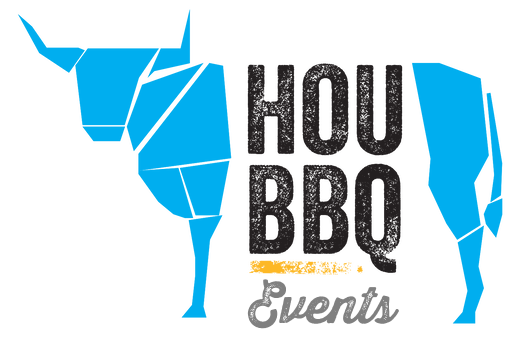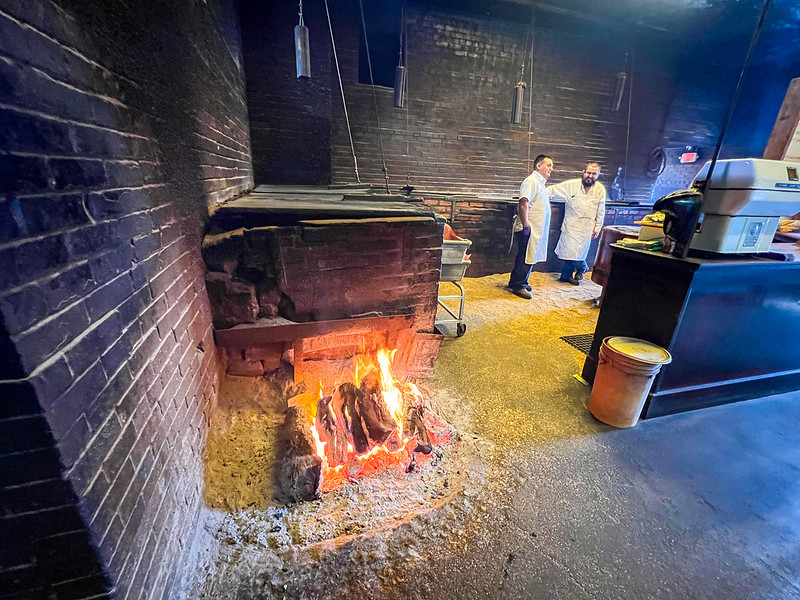Above-ground brick pits with a firebox to the side (offset) of the cooking chamber is the quintessential cooking appliance of Central Texas-style barbecue.
This device gave rise to “indirect-heat” cooking, in which heat and smoke flow horizontally over and around the meat, cooking and flavoring it, rather than the “direct-heat” method, in which the fire is directly under the meat (grilling).
Why did barbecue in Central Texas, and later in other parts of the state, adopt this unique cooking method? There is no definitive answer, but piecing together the histories of both barbecue and culinary culture in Texas offers some clues.
The earliest barbecue pits in Texas can be traced as far back as Austin’s Colony, where community barbecues used a long trench (pit) dug in the ground and filled with coals upon which meat was cooked on skewers or grates placed directly above the heat.
Large community barbecues celebrating political candidates and the completion of railroads were all the rage through the late 1800s.
Eventually, barbecue evolved from free community events to being sold in restaurants and meat markets. The rise of the restaurant industry in the early 1900s paralleled the rise in food safety concerns.
With the publication of Upton Sinclair’s “The Jungle” in 1906, which exposed the unsanitary practices of the meatpacking industry, the U.S. government responded with the first food safety legislation in the Pure Food and Drug Act and Federal Meat Inspection Act.
With food safety on the minds of both politicians and the public, cooking meat in the ground became impractical. It was in the early 1910s that “barbecue ovens” began to appear in reference to restaurants and community events.
These were large, brick-framed vessels in which a meat could be cooked, often by burning natural gas. Barbecue pits, or more specifically roasting ovens, had been raised out of the ground.
The earliest references to the precursors of modern offset brick pits can be found starting in the early 1920s. Smitty’s Market in Lockhart, built in the 1920s as Kreuz Market, still has the original offset brick pits presumably built at the same time as the building.
But why did Texas barbecue cooks implement the offset style of pit? It may be due to food safety and quality concerns.
Indeed, advertisements for barbecue joints of the time often invited patrons to inspect the pits and guaranteed quality.
A new type of barbecue pit was described the Jan. 16, 1928 issue of the Austin American newspaper. According to Charles Nitschke, the manager of the Barbecue Café at 104 E. 5th in Austin, “There is only one way to make good barbecue, and so far as I know, this is the only place in the city where you can find barbecue made that way.”
What way is that? Well, it sounds like one of the earliest descriptions of an offset barbecue pit.
From the article, “The best packing meat on the market is treated in a specially constructed pit. In this pit there is no fire under the meat, but the fire at both ends provides for heat and smoke to do the work. Grease from the meat runs through the screened bottom.”
The reference to grease is notable. During this time of heightened food quality and safety, grease had become a dirty word in restaurants. The term “greasy spoon” originated in America in the 1920s and referred to an unsanitary restaurant.
It sounds like the firebox was offset in order to control the grease produced by the cooking meat, which in a direct-heat pit would drop onto the coals, producing ashes and smoke that, at the time, may have been considered unsanitary.


